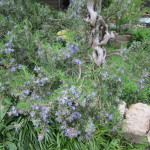 Herbs are such an important part of the Italian kitchen and are generally used fresh, picked right out of the garden when needed. Many of the herbs are perennials, coming back every spring and anchoring a special place against a rock wall or lining a path. This past winter, friends in Tuscany sent pictures and I was really struck by how green everything was, while everything around me in Louisville was brown and gray. I realized that it was all due to the gorgeous bushes of rosemary, sage and bay that adorn every nook of Tuscany and even though they’re dormant in the winter, are always green. Then in the spring they come back to live and put out blossoms and new growth.
Herbs are such an important part of the Italian kitchen and are generally used fresh, picked right out of the garden when needed. Many of the herbs are perennials, coming back every spring and anchoring a special place against a rock wall or lining a path. This past winter, friends in Tuscany sent pictures and I was really struck by how green everything was, while everything around me in Louisville was brown and gray. I realized that it was all due to the gorgeous bushes of rosemary, sage and bay that adorn every nook of Tuscany and even though they’re dormant in the winter, are always green. Then in the spring they come back to live and put out blossoms and new growth.
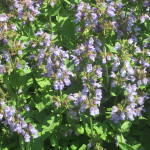
Since spring is the time when we’re replanting our gardens and planning for the summer growing season, let’s talk about some of the fresh herbs we use in Italy that make any garden a better space and will keep it green even in the winter.
The two most commonly used herbs in Tuscany are sage and rosemary. Both are widely used in Tuscan stews, ragu, roasted meats and wild game. With their high oil content, these aromatic herbs are always cooked before eating and their soft purple flowers attract bees and birds and to your garden. Sage leaves are wonderful fried, especially if you can find the variety that has big leaves, 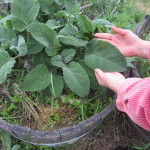
or put inside a stuffed turkey breast or pork loin along with parsley and bread crumbs. Rosemary sprigs can be thrown whole into a rustic lamb or beef stew; the needles fall off and you pull the empty stem out of the pot before serving.
Two other perennial herbs that are widely used in Italy are thyme and bay. Bay is grown as a hedge in Tuscany and while you never find it dried in a jar in the store, it is always used fresh off the tree. Whenever you need a leaf or two for the soup or braised meat, you simply pluck a few leaves off your neighbors tree. 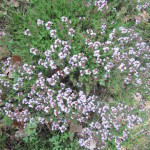 Thyme also presents delicate purple or white flowers in the spring as it prepares to come back in force, and is a quick-growing border to the garden.
Thyme also presents delicate purple or white flowers in the spring as it prepares to come back in force, and is a quick-growing border to the garden.
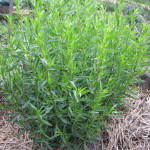 Tarragon is a wonderful herb that goes well with chicken or vegetables like green beans and has been used in the Siena area since the middle ages. Also a perennial, it gets bigger and taller every year. Take care not to get the Russian variety which has very little flavor, especially after the first year.
Tarragon is a wonderful herb that goes well with chicken or vegetables like green beans and has been used in the Siena area since the middle ages. Also a perennial, it gets bigger and taller every year. Take care not to get the Russian variety which has very little flavor, especially after the first year.
Italian, or flat leaf, parsley can be either an annual or a perennial, but we tend to replant it every year, even if it volunteers to come back from last summer. It is indispensable in a wide variety of dishes and is extremely versatile: the stems are used for stocks and broths, the leaves can be tossed in when sautéing garlic for marinara or when stewing meat, and its fresh clean taste is wonderful added raw to a salad or to finish any dish or garnish a plate or platter.
Basil is one of the only herbs that is an annual and must be planted in a sunny spot every year. Since basil is a water-based herb, it is not used in cooking for long periods of time, but rather is thrown raw into a sauce or salad at the end of preparation. In the early fall or late summer, when basil comes to the end of its life cycle, it can be harvested and pureed together with garlic, olive oil, parmigiano and pine nuts or walnuts for pesto. Basil turns black when heated so take care not to cook either the herbs or the pesto, just toss it raw with cooked pasta and serve.
I’ve planted several herbs this spring, especially lots of sage and rosemary around my new kitchen space in Louisville. I’m looking forward to the beauty they lend and the wonderful tastes and smells they’ll add to the kitchen for years to come!